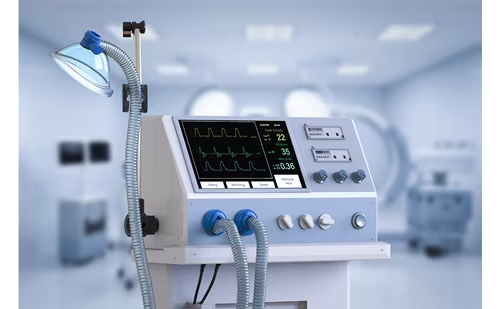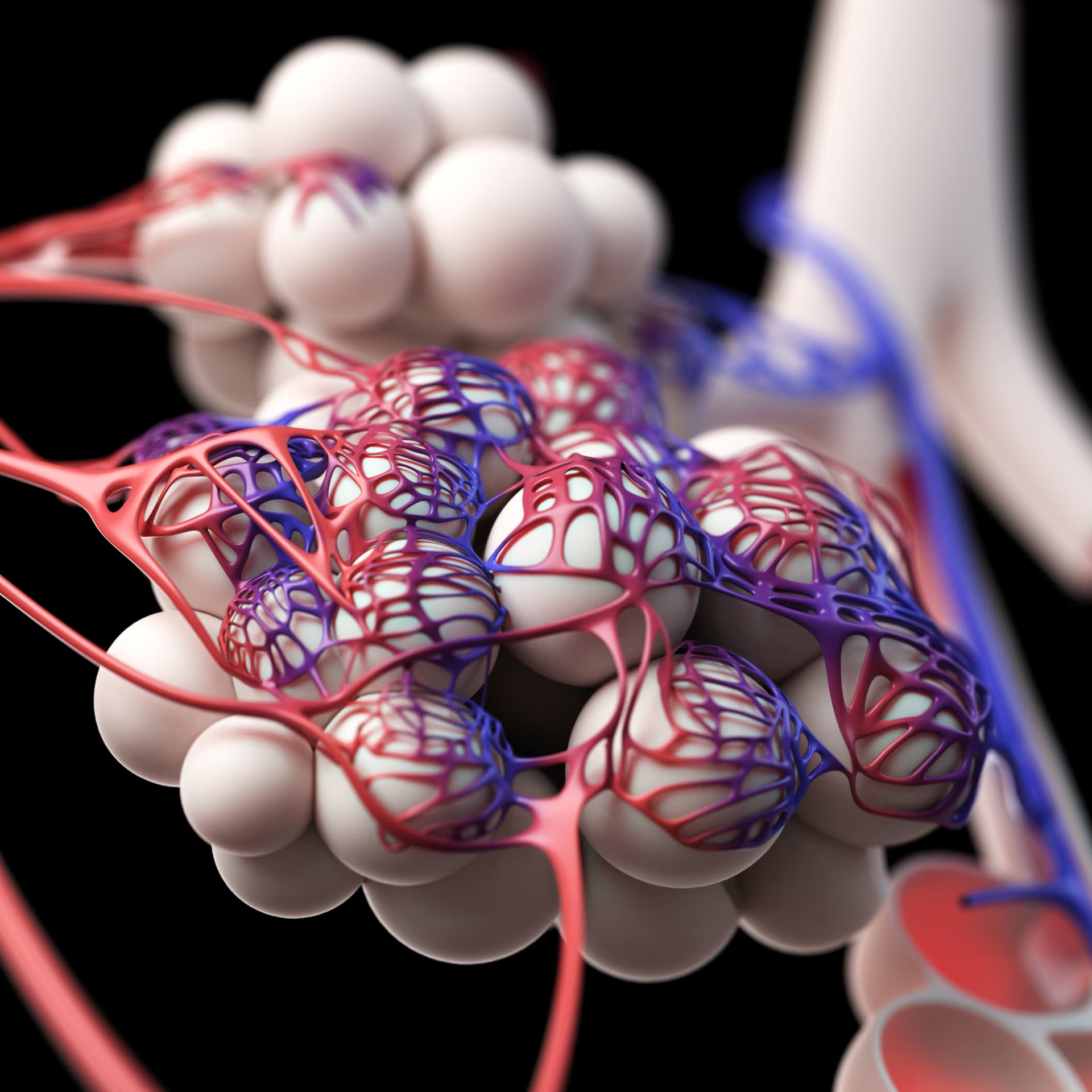The natural progression of neuromuscular disease (NMD) inevitably involves respiratory system failure. Increasing respiratory muscle weakness causes worsening hypoventilation, leading to hypercapnia and, eventually, hypoxemia. The American College of Chest Physicians (CHEST) recently published guidelines on the respiratory management of patients with NMD, who are increasingly presenting at pulmonary clinics.1 Continued improvements in non-invasive positive pressure ventilation (hereafter NIV) are enabling patients with NMD to live longer and have a better quality of life.2,3
NMD encompasses a broad group of diseases with different pathophysiological mechanisms that make it difficult to predict disease progression; moreover, the different diseases affect different parts of the nervous and musculoskeletal systems, further complicating the situation.4 Because the progression of NMD is variable, disease monitoring is imperative. Pulmonary function tests, including maximal inspiratory pressure and maximal expiratory pressure, provide a comprehensive assessment of lung function. Standard pulmonary function tests include measurements of spirometry, lung volumes and diffusion capacity.5 An upright and supine measurement of forced vital capacity may be used to detect diaphragmatic weakness to identify patients at risk for hypoventilation.6 When in doubt, routine arterial blood gases or non-invasive measures – such as end-tidal or transcutaneous carbon dioxide (CO2) – facilitate assessment for hypercapnia to identify additional patients requiring increased respiratory support. Respiratory failure in NMD is unavoidable, and proper timing for initiating NIV is key to preserving the patient’s quality of life.
The CHEST guidelines suggest that treatment should be individualized when the respiratory system fails. However, beyond this statement, there is very little guidance for personalizing treatment with NIV. Generally, the patient’s insurance policy will dictate what is and is not allowed for patients. Several modalities of NIV are available for chronic respiratory failure, with bilevel-positive airway pressure and volume-assured pressure support (VAPS) being the most commonly used. VAPS is a more sophisticated setting than bilevel-positive airway pressure and, as its name suggests, guarantees a predetermined tidal volume (as in the case of average VAPS) and/or minute ventilation (as with intelligent VAPS). Additionally, non-vented masks with closed circuits using assist-control ventilation are available, and these allow for even more control over respiration. Unfortunately, more respiratory support often means increased physical limitations for the patient, and this should be taken into account upon therapy initiation.
Patients are more susceptible to hypercapnia while asleep, especially during rapid eye movement (REM) sleep, when the accessory muscles of respiration become atonic, and ventilatory chemosensitivity plays less of a role in respiratory drive.6–11 An overnight polysomnogram with CO2 monitoring (transcutaneous or end-tidal) may reveal nocturnal hypercapnia, leading to initiation of NIV. Additionally, neuromuscular weakness exacerbates the decrease in functional residual capacity in the supine position compared with the upright one due to the force of abdominal contents pushing the diaphragm further into the thorax.10
Choosing a modality that normalizes hypercapnia is preferred, as the optimal benefits are seen with physiological CO2 levels.12,13 There are data suggesting that physiologic levels of partial pressure of CO2 (which are generally considered <45 mmHg) are beneficial to all patients at risk for hypoventilation, including patients with primary lung disease and those with NMD. Benefits include preserving sleep architecture, improving gas exchange (both during the day and night), augmenting lung function decline, providing respiratory muscle relief, improving memory and cognition, and improving survival.14–21 Many of these benefits have been extrapolated from studies performed primarily in patients with chronic obstructive pulmonary disease because of a paucity of data on the NMD population.18,22 Indeed, even the CHEST guidelines rely on expert opinion for the timing of NIV initiation and management for this very reason.
Eucapnia can certainly be achieved through biLevel positive airway pressure alone, although the magnitude of pressure support may be unexpected. Early trials of NIV for treating chronic obstructive pulmonary disease with hypercapnia failed to elicit a significant benefit, in part due to inadequate pressure support.23,24 Although a pressure support of 5 cm H2O is often thought to provide sufficient ventilatory support, this may not be the case. Pressure support of up to 20–25 cm H2O may be required to realize fully the therapeutic potential of NIV, especially in patients with NMD.22 Again, the goal of therapy should be to normalize CO2 levels while providing ventilatory support and relieving dyspnoea.
The expiratory positive airway pressure (EPAP) setting, which should be the lowest effective pressure needed to maintain airway patency, should also be considered.10,11 Higher EPAP levels can increase the work of breathing during exhalation and lessen the benefit gained from positive pressure support. Auto-EPAP settings are a feature of some bilevel and VAPS devices and can take advantage of different upper airway resistance during wakefulness compared with during sleep.
Physicians must also be aware of the intricacies of each ventilator and its settings to truly personalize care. Setting the appropriate trigger and cycle sensitivity is as important as the desired minute ventilation, especially knowing that respiratory muscle strength will likely diminish over time. Lower trigger and cycle sensitivities may be desirable depending on the severity of respiratory muscle weakness. Lowering trigger sensitivity allows for weaker respiratory efforts to trigger pressure support. Lowering cycle sensitivity allows for a longer inspiratory time; this results in a larger tidal volume, which is more suitable for patients with NMD. Another option is the pressure-controlled mode in average VAPS devices in which the inspiratory time can be set to prevent the premature termination of inspiration due to inadequate inspiratory flow.
Ventilator synchrony is ideal for patient comfort and a more effective therapeutic response.1 As NMD progresses, setting a backup rate provides additional support for a predetermined minute of ventilation. This is especially important when the disease progresses and the patients required full-time ventilatory support. Because no NIV modality has been proven to be superior to another, patient feedback can help determine the optimal modality based on comfort.
Aside from its indications, physicians should be aware of the pitfalls and contraindications of NIV. Bulbar dysfunction leading to ineffective cough and recurrent aspiration are common complications of NIV, which may complicate or even preclude therapy. As with all elements of respiratory failure, salivary secretion control and airway clearance impediments should be considered in individualized management plans. The current CHEST guidelines provide important pharmacologic recommendations for sialorrhea, including the use of oral and patch anticholinergics, depending on tolerance and efficacy.1 The guidelines underscore glossopharyngeal breathing as a useful, cost-effective technique for lung volume recruitment and airway clearance. As many patients develop an ineffective cough, manually assisted cough techniques are similarly supported, with or without mouthpiece supplementation (see Table 5 from the CHEST guidelines).1 However, one important limitation to these techniques is the need to have a caregiver who is properly trained to help perform these manoeuvres. Additionally, mechanically assisted cough devices implemented at regular intervals can provide a helpful alternative when other techniques fail. Similarly to patients with other disorders experiencing difficulty in clearing airway secretions, patients with NMD can also benefit from high-frequency chest wall oscillations. While many of these techniques are regularly implemented by providers with experience caring for these patients, it is important to understand that evidence to support their use is still lacking.
As NMD progresses, NIV may eventually be rendered inadequate due to the increasing disease burden. The natural progression of respiratory failure usually begins with isolated REM-associated hypoventilation and progresses to nocturnal, and finally diurnal, hypoventilation. Mouthpiece ventilation may be used as needed during the day for supplementary ventilatory support. Alternatively, closed-circuit ventilation with a non-vented mask may provide better comfort and ventilatory support in patients with worsening respiratory muscle weakness.25 Disease progression is not certain, and exceptions exist where disease progression stagnates. However, many patients will become weaker over time and may require ventilatory support above and beyond what NIV can provide. Proper counselling is of the utmost importance for the patient to understand their treatment options: to either continue ventilatory support via tracheostomy and mechanical ventilation or to opt for palliation. Informed decision-making does not begin at the end of life but is consistently provided at every visit to ease this process and to offer patients some control in a largely uncontrollable situation.
We now have a roadmap for respiratory treatment in NMD. Frequent disease monitoring is necessary, given the variable progression of the disease. Initiating NIV based on specific patient characteristics and muscle weakness severity allows for more personalized care. Finally, shared decision-making with the patient and their family should be used to effectively maximize symptom control and to adhere to patients’ wishes regarding life-sustaining therapy.







